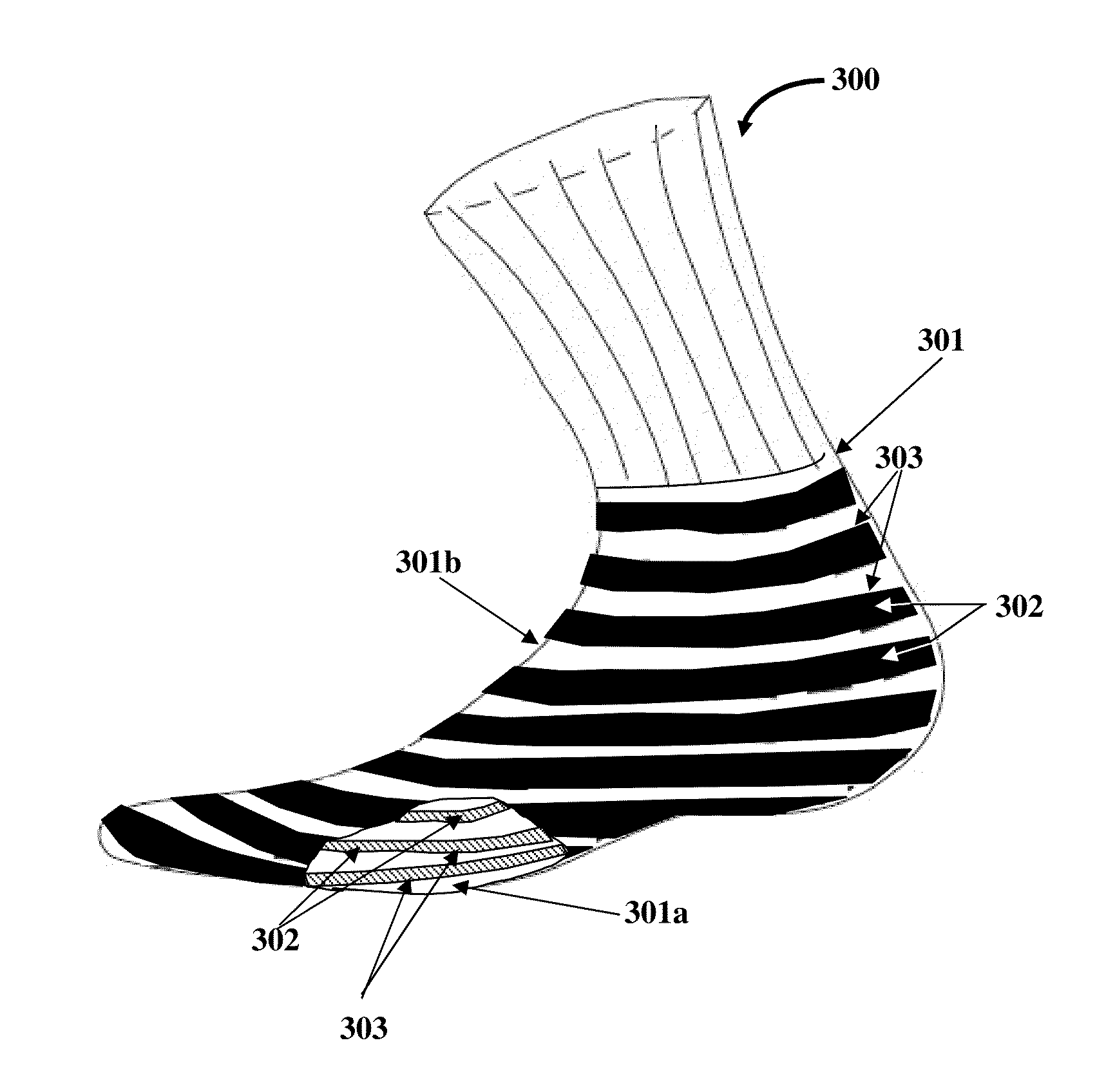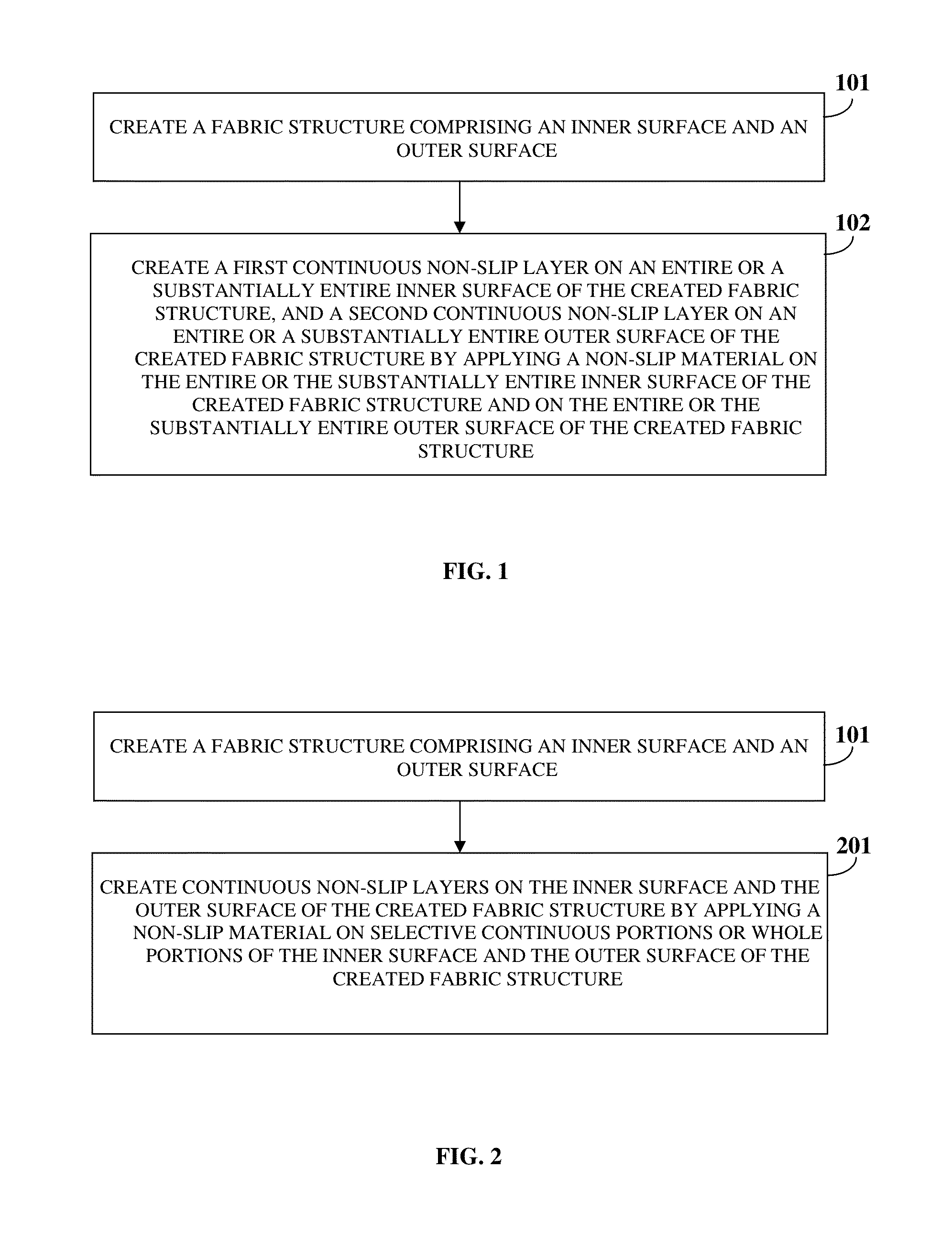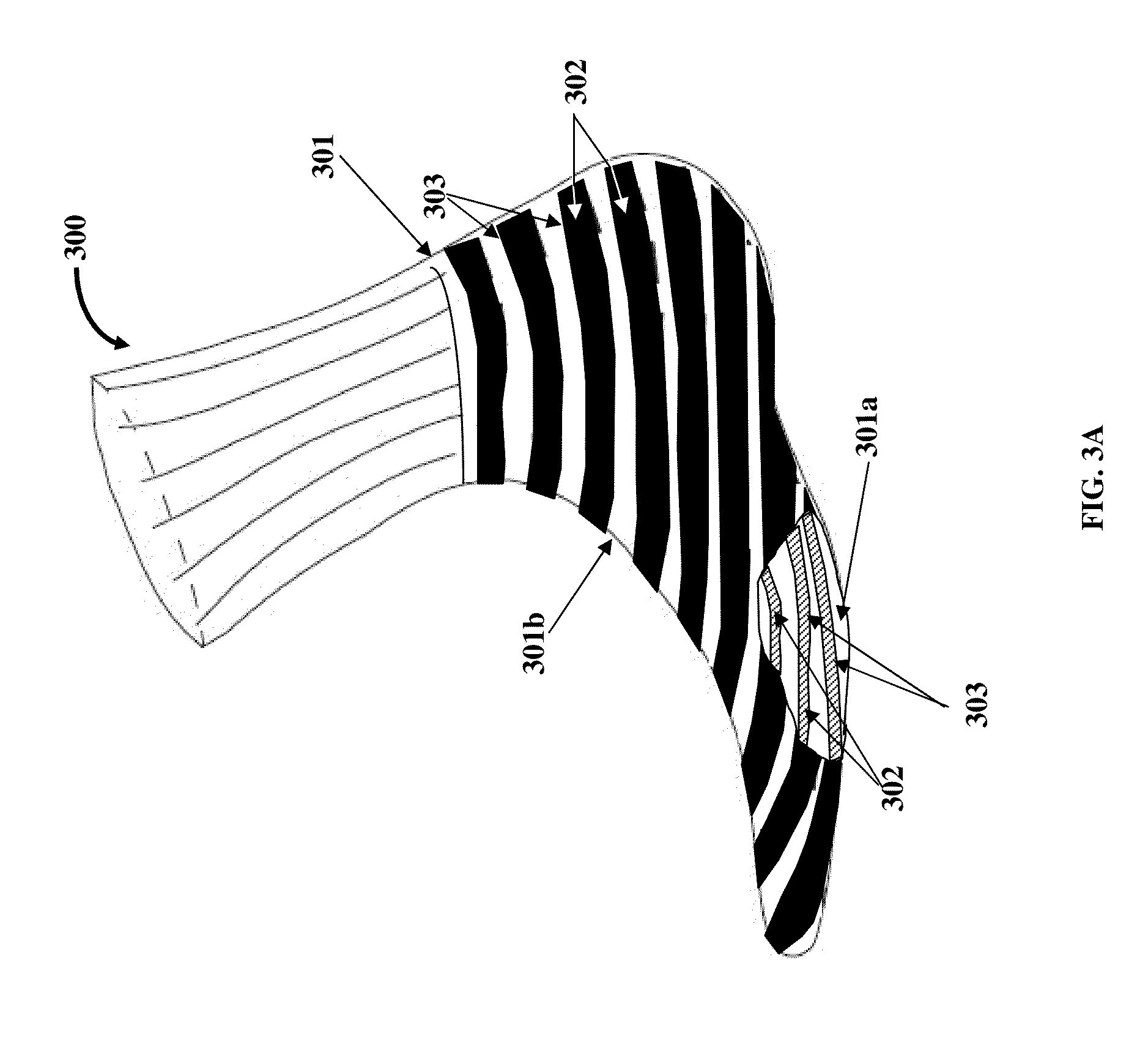Continuous Non-slip Layered Garment
a layered garment and non-slip technology, applied in knitting, ornamental textile articles, crocheting, etc., can solve the problems of low friction coefficient of fabric created through a conventional manufacturing process, inconvenient use, slippage between the fabric of the garment and the surface of the body part in contact with the garment, etc., and achieves the effect of increasing the response time, and reducing the friction coefficien
- Summary
- Abstract
- Description
- Claims
- Application Information
AI Technical Summary
Benefits of technology
Problems solved by technology
Method used
Image
Examples
Embodiment Construction
[0039]FIG. 1 illustrates a method for making a continuous non-slip layered garment 300 as exemplarily illustrated in FIG. 3E. The continuous non-slip layered garment 300, for example, a continuous non-slip layered sock, a continuous non-slip layered glove, etc., is made by configuring a fabric structure 301 exemplarily illustrated in FIGS. 6A-6B, to conform to a user's body part, for example, a foot, a hand, etc., and then applying a non-slip material 302 to the configured fabric structure 301 exemplarily illustrated in FIGS. 3A-3G. As used herein, “fabric structure” refers to a network of one of natural threads, synthetic threads, non-slip threads, or any combination thereof, that can be configured or knitted, for example, using a knitting machine 511 exemplarily illustrated in FIG. 5A, to construct a garment, for example, a sock, a glove, etc. Also, as used herein, “non-slip material” refers to a non-slip, sticky, gripping, tacky, and / or textured material that exhibits generally h...
PUM
| Property | Measurement | Unit |
|---|---|---|
| thickness | aaaaa | aaaaa |
| diameter | aaaaa | aaaaa |
| temperature | aaaaa | aaaaa |
Abstract
Description
Claims
Application Information
 Login to View More
Login to View More - R&D
- Intellectual Property
- Life Sciences
- Materials
- Tech Scout
- Unparalleled Data Quality
- Higher Quality Content
- 60% Fewer Hallucinations
Browse by: Latest US Patents, China's latest patents, Technical Efficacy Thesaurus, Application Domain, Technology Topic, Popular Technical Reports.
© 2025 PatSnap. All rights reserved.Legal|Privacy policy|Modern Slavery Act Transparency Statement|Sitemap|About US| Contact US: help@patsnap.com



